High-Intensity Focused Ultrasound (HIFU) in Poland
Search and Compare the Best Clinics and Doctors at the Lowest Prices for High-Intensity Focused Ultrasound (HIFU) in Poland
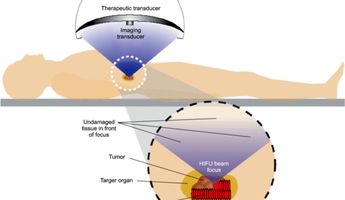
Find the best clinics for High-Intensity Focused Ultrasound (HIFU) in Poland
With Medijump you can browse 2 facilities offering High-Intensity Focused Ultrasound (HIFU) procedures in Poland. The cheapest price available is $8,003 in Grodzisk Mazowiecki. And for the cheapest price globally, prices start from $56 in Indonesia.
High-Intensity Focused Ultrasound (HIFU) in Grodzisk Mazowiecki
Price: $ 8,003
Indonesia offers the best prices Worldwide
Price: $ 56
European Health Centre, can be found in Borowa, Otwock, Poland and offers its patients High-Intensity Focused Ultrasound (HIFU) procedures as well as 62 other procedures, across 15 different procedure categories. At present, there is no pricing information for High-Intensity Focused Ultrasound (HIFU) procedures at European Health Centre. The pricing information is quite specialised, so it's only available on request, and the average price is around ฿287,999. A small team of medical professionals undertake all procedures at the Clinic, with 2 in total, and European Health Centre is accredited by just one known accreditations institute, ISO 9001:2008
- Home
- Poland
Compare Before & After Photos of _procedure_photos.phpHigh-Intensity Focused Ultrasound (HIFU)
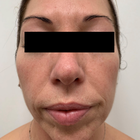
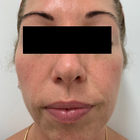
Front view

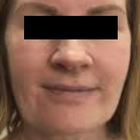
Front view


Front view
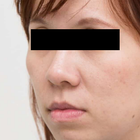
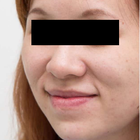
Front view
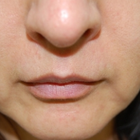
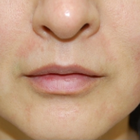
Front view
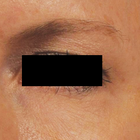
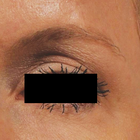
Front view
WHY US?
At Medijump, we're making medical easy. You can search, compare, discuss, and book your medical all in one place. We open the door to the best medical providers worldwide, saving you time and energy along the way, and it's all for FREE, no hidden fees, and no price markups guaranteed. So what are you waiting for?

Free

Best Price

Widest Selection

Risk-Free
What you need to know about High-Intensity Focused Ultrasound (HIFU) in Poland
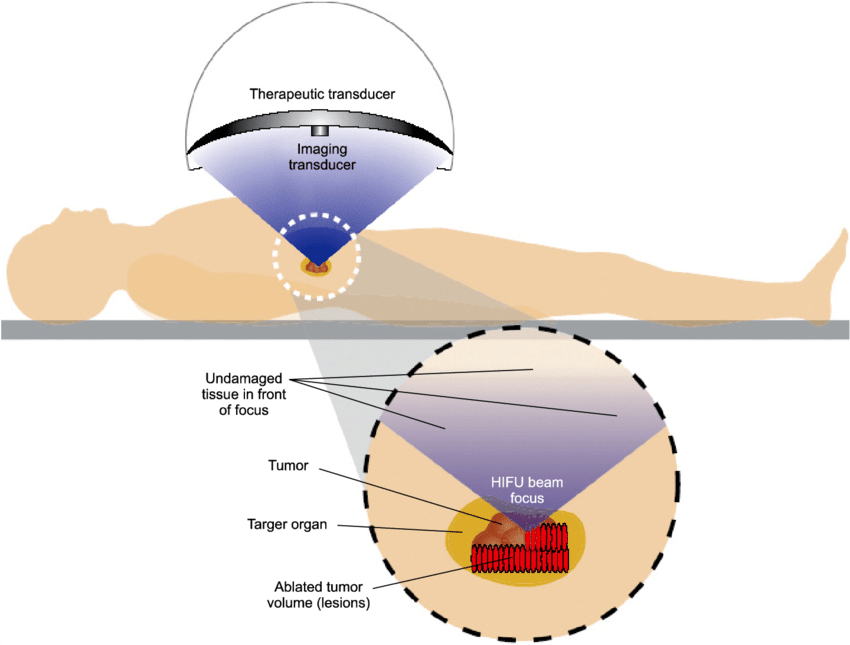
High intensity focussed ultrasound technique (HIFU) also known as focussed ultrasound surgery (FUS), uses non-ionizing ultrasound waves to heat up your body tissues. Temperature can be increased up to 70 to 90°C. These sound waves do not pass through air and bone. It is used for multi-purposes. It works to increase your blood, and lymph flow stimulates cell division and destroys tumor cells. It can also be used to treat a number of disorders including various types of cancer and uterine fibroids. Its use in the treatment of prostate cancer is gaining fame. It can also be used for cosmetic reasons, to reduce wrinkles, aging lines and to lift your loose skin. It is found to be most effective on jawline and cheeks. It should always be performed by the experts because the sonication of the wrong tissue can be dangerous. Also, there might be incomplete destruction of the tumor. Some areas of your body can not be sonicated as they are sensitive to sound waves, this should also be kept in mind while performing HIFU. It can only be used to treat localized cancer and tumors. Cancer which has spread cannot be cured through HIFU.
As HIFU is involved in the treatment of a number of diseases, before going through it, you may suffer from those diseases. These disorders include ovarian fibroids, different types of cancers, breast tumors, Parkinsonism, and a number of other neurological disabilities. You might have loose skin of face, neck, and chest. Vaginal laxity is also a problem. After HIFU, your tumors are destroyed, cancer cells are killed and diseases are cured. Your loose skin looks tightened and strengthened. Wrinkles and aging lines are gone. Vaginal and skin laxity are removed. You look younger than your actual age.
What does a High-Intensity Focused Ultrasound (HIFU) Procedure Involve?
The procedure begins with cleaning the area to be sonicated with alcohol swabs so that there are no germs and bacteria. In the next step, a gel is applied to your skin. Magnetic resonance imaging (MRI) or ultrasound is used to focus the exact tissue, organ or tumor that needs to be treated. The individual is sedated to avoid discomfort and pain during the procedure. After this, the procedure differs according to the purpose of HIFU. In general, an acoustic lens is used to focus sound waves on the targeted organ. The transducer device is used to emit sound waves. The sound waves propagate through the various layers of skin to reach the tumor to be destructed. When sound waves reach the tumor, heat is produced there increasing the temperature up to 90°C in 20 seconds only. This heat starts destroying the cancer cells there.
How Long Should I Stay in Poland for a High-Intensity Focused Ultrasound (HIFU) Procedure?
It is a 1 to 4 hours procedure. It depends upon the purpose for which HIFU is being performed. Generally, it is an outpatient procedure. You can be discharged from the hospital after the effects of the sedatives subside. You should plan to stay in Poland for at least 14 days after your Procedure, this will allow for the initial recovery and follow-up check-ups, etc.
What's the Recovery Time for High-Intensity Focused Ultrasound (HIFU) Procedures in Poland?
The recovery time differs and depends upon the purpose for which HIFU is being carried out. You may suffer from pain and discomfort for 3 to 4 days after the procedure. The soreness and swelling will subside in 2 to 3 weeks. It has less recovery time and has less invasive techniques approved by the FDA. The Non-ionizing radiations used in this technique are the least damaging.
What sort of Aftercare is Required for High-Intensity Focused Ultrasound (HIFU) Procedures in Poland?
Aftercare differs in accordance with the purpose for which HIFU is done. However, the following points should be kept in mind to look after yourself at home after being discharged:
- Visit your doctor on a regular basis.
- Do not drive home if you are still under the influence of sedatives.
- Eat healthily. Follow a diet plan made by an expert. It can help you recover faster.
- Take your medicines as and when prescribed by the doctor.
- Take a rest and give yourself time to recover.
- In the case of HIFU for cosmetic reasons, avoid contact with sunlight and wear sunscreen while going out.
- Do not rub or massage your skin.
- Look for something wrong. If you find any sign, visit your doctor immediately.
- In case of any discomfort, contact your physician. Do not go for self-medication.
What's the Success Rate of High-Intensity Focused Ultrasound (HIFU) Procedures in Poland?
HIFU has been found to be very successful in the treatment of most of the disorders. However, the success rate differs for each purpose. According to a study, the overall success rate for prostate cancer treatment was reported to be 84%. Cancer patients were divided into 3 groups. The high-risk group showed a low success rate. The intermediate group showed a higher success rate reaching 83.4% and the low-risk group showed the highest success rate of 94.2%. It is also found to be very effective and successful in treating skin laxity and uterine fibroids.
Are there Alternatives to High-Intensity Focused Ultrasound (HIFU) Procedures in Poland?
In actuality, HIFU itself is a non-surgical alternative to most of the surgeries. However, the following are some useful alternatives to HIFU:
- Dermal fillers: it is an alternative of HIFU for a facelift. Injections containing Botox, Restylane, etc. are given into your skin to make it look lifted and plump. Your skin looks wrinkle-free and you look younger than your age.
- Uterine artery embolization: this is a treatment for uterine fibroids. Arteries supplying the uterus are occluded by injecting an embolic agent into it. This cuts off blood supply to the fibroids causing them to shrink and ultimately die.
- Radical prostatectomy: also known as an open prostatectomy, entire prostate and seminal vesicle along with some lymph nodes in the pelvic area is surgically removed. Nerve damage is avoided to ensure erection and active sexual life afterward.
- Bilateral orchiectomy: in this surgery, both the testicles are surgically removed. This helps in treating prostate cancer.
- Brachytherapy: in this therapy, radioactive substances are directly inserted into the prostate gland. These are called seeds which give off radiations around the area where they were placed.
Whilst the information presented here has been accurately sourced and verified by a medical professional for its accuracy, it is still advised to consult with your doctor before pursuing a medical treatment at one of the listed medical providers
No Time?
Tell us what you're looking for and we'll reachout to the top clinics all at once
Enquire Now

Popular Procedures in Poland
Prices Start From $979

Prices Start From $714

Prices Start From $16

Prices Start From $28

Prices Start From $53

Recommended Medical Centers in Poland for High-Intensity Focused Ultrasound (HIFU)

- Interpreter services
- Translation service
- Religious facilities
- Medical records transfer
- Medical travel insurance
- Health insurance coordination
- TV in the room
- Safe in the room
- Phone in the room
- Private rooms for patients available

- Interpreter services
- Translation service
- Religious facilities
- Medical records transfer
- Medical travel insurance
- Health insurance coordination
- TV in the room
- Safe in the room
- Phone in the room
- Private rooms for patients available

- Interpreter services
- Translation service
- Religious facilities
- Medical records transfer
- Medical travel insurance
- Health insurance coordination
- TV in the room
- Safe in the room
- Phone in the room
- Private rooms for patients available

- Interpreter services
- Translation service
- Religious facilities
- Medical records transfer
- Medical travel insurance
- Health insurance coordination
- TV in the room
- Safe in the room
- Phone in the room
- Private rooms for patients available
High-Intensity Focused Ultrasound (HIFU) in and around Poland
About Poland
Poland, as one of Central Europe's most expansive nations, has only recently begun to make its mark as a key player in the realm of Medical Tourism. Being particularly appealing to tourists from neighboring regions, many visitors arrive seeking High-Intensity Focused Ultrasound (HIFU) procedures. Poland's open border policy further simplifies travel between its territory and other countries within the European Union (EU), making it an accessible destination for many.
The Polish healthcare system comprises a blend of public and private establishments. While none of these facilities hold JCI accreditation, they are endorsed by local accreditations issued by the Polish Ministry of Health. Their recognition within the European Union testifies to the quality and reliability of these certifying bodies.
In Poland, the most frequently sought-after medical procedures encompass dental, cosmetic, orthopedic, and bariatric treatments. Impressively, the costs of these treatments are significantly lower than what one would expect to pay in Poland's Western European counterparts. Beyond Poland's vibrant capital, Warsaw, cities such as Krakow, Jelenia Gora, and Wroclaw have emerged as favored destinations among medical tourists.
Popular Parts of Poland
Poland, with a population exceeding 38.5 million, is a nation steeped in rich history and recognized for its whopping fourteen UNESCO World Heritage Sites. Despite frequently being overshadowed in the realm of tourism, the country in reality, boasts of a multitude of alluring attractions waiting to be explored and appreciated.
- Warsaw, Poland’s capital provides tourists with a mix of old and new. Restored Gothic buildings and modern glass structures stand side by side. The city offers a scenic view. Wander around the streets of Old Town to see the oldest part of the city. Warsaw was also the former home of Frederic François Chopin; tourists can retrace his steps by visiting Saxon Garden, where Chopin’s family used to live next door.
- Krakow is Poland’s former capital. The city is full of charms; from cobbled streets, beautiful squares, pretty buildings, churches, and a castle. Wawel Castle, located in the Old Town area, is an architectural wonder with medieval, baroque, and renaissance style. The city has numerous museums that provide insights into its fascinating history.
- Gdansk stands as one of the country's most breathtaking seaside cities. It houses some of the finest museums in Poland and is renowned for its thriving nightlife and diverse culinary scene. Visitors are encouraged to admire the vibrant street art, delve into history at the numerous museums, explore the charms of the Old Town, and embark on a gastronomic adventure with a food tour in Gdynia. In a nutshell, Gdansk offers a rich and memorable travel experience.
- Poznan will amaze tourists once they see its vibrant, playful, and unique treasures. As the birthplace of the Polish nation, the city offers many historical attractions as well as urban green spaces. Tour the Lech Brewery to learn more about the brewing process of beer visit the Old Market Square and find an array of bars and food stalls.
- Wroclaw is not as popular as other cities in Poland. It’s actually full of attractions, incredible architecture, and hidden gems. Tourists will find dwarf statues throughout the city and can go on the dwarf trail. Market Square is the city’s centerpiece that blends colorful buildings and gives a scenic view, especially in winters.
Weather and Climate in Poland
Poland has a temperate climate and sometimes experiences rough weather. Spring starts in late March to May. The season is characterized by a wave of warmer weather with less frequent rain. It is one of the best times to visit Poland because the temperature is comfortable.
Poland's summer season extends from June until August and brings with it a certain unpredictability in weather patterns. The general climate is warm, with temperatures hovering between 18 to 30°C. Amidst sunny spells and elevated temperatures, frequent rain showers and storms are also common phenomena. This period marks the peak of the tourism season and tourists can expect prices to see a corresponding increase. Despite the occasional rains, summer promises a delightful time to experience Poland in all its warmth.
September to November is Autumn, the season where the temperature starts to drop. Late September and October are still warm, while November is cold and wet. Sunny days during this season are known as “Polish Golden Autumn.”
Winter in Poland, which runs from December until early March, can be exceedingly cold. Temperatures often tumble to an average range of 0 to -10°C and can even drop as low as -20°C. Despite the chilly conditions, this is actually the peak season for mountain ski resorts, attracting numerous enthusiasts to take advantage of Poland's picturesque winter landscapes.
Getting Around in Poland
Most international flights arrive at Warsaw Frederic Chopin Airport. It’s Poland’s largest and busiest airport. The airport serves domestic and has International connections with many cities around the world. It is the hub for LOT Polish Airlines. Budget airlines such as Wizz Air and EasyJet also operate flights from this airport. There is a smaller airport, Warsaw Modlin Airport, which handles more budget airlines.
To get to the city center, bus, taxi, and train are available. There are five public buses that stop at Warsaw’s city center; bus 175, bus 188, bus 148, bus 331, and bus N32 (night bus). Taxis are available, but always make sure to use licensed taxi services. The fare from the airport to the city center is around 40 PLN. Chopin Airport is linked to Legionowo and Sulejówek Miłosna by a railway service. Tourists can buy ZTM tickets to ride the bus and train which can be purchased at the Passenger Information Point in the arrivals hall, ticket machines at bus stops and train station entrance, or from bus drivers.
Ample public transportation options simplify getting around in Poland. Trains, in particular, offer an incredibly budget-friendly means of travel. For instance, the journey from Krakow to Warsaw is set to cost approximately 45 PLN and spans a duration of around three hours. Meanwhile, a slightly longer five-hour train journey from Warsaw to Gdansk can be undertaken at a reasonable fare of around 65 PLN. Such connectivity and affordability make exploration within Poland both easy and economical.
Within the cities, local buses in the central zone cost around 4 PLN (a single-fare ticket). Major cities offer one-day tickets for 20 PLN. Taxis are relatively cheap and tourists can get around the city quickly. Taxis are metered and usually start at around 6 PLN to 8 PLN. Unlicensed taxi drivers are most likely to cheat and charge more. There are taxis that put a fake phone number in their cars, be careful and ask your hotel staff for the number of the taxi company they have used previously. Cycling is a good way to explore the scenery in Poland. There are many bike rentals around the country, always be aware of drivers since some are careless.
For cities like Krakow, tourists are highly recommended to secure tourist cards. These cards provide unlimited access to public transportation for a period of one to three days. In addition, they also offer free or discounted admission to several museums. This is a great bargains that grants tourists flexibility and sizable savings to fully relish their visit.
Tourist Visas in Poland
Poland is part of the Schengen Area. Citizens of the United States, Canada, Australia, New Zealand, Japan, Israel, and several other countries do not need to obtain a visa and can stay in Poland for up to 90 days. EU citizens do not need a visa and can stay indefinitely. Other nationalities must check with their local Polish embassy. All visitors must hold a passport valid for at least six months.
Additional Information about Visa in Poland:
- It is important to note that the visa requirements for Poland can change at any time, so it is always best to check with the Polish embassy or consulate in your home country before you travel.
- If you are planning to stay in Poland for longer than 90 days, you will need to apply for a visa. You can do this at the Polish embassy or consulate in your home country.
- When applying for a visa, you will need to provide a number of documents, including a valid passport, proof of travel insurance, and proof of financial means.
Additional Information
- Local Currency: the official currency is the Polish złoty (PLN). 1 USD converts to 4.21 PLN.
- Money & Payments: ATMs are available in cities and towns; even small villages should have at least one. The best way to exchange rates is at banks or withdrawing money from ATMs. Credit cards (Visa and MasterCard) are accepted in most hotels and restaurants. Always carry small cash and coins for shops and cafes. Tipping in Poland is mostly optional. In restaurants, 10% is the standard. Room-service staff and porters in hotels expect to be tipped. Taxis don’t expect tips.
- Local Language: The official language is Polish. Most of the locals in the tourist areas will have decent English. Foreign tourists should be aware that all official information including street signs and directions are only written in Polish.
- Local Culture and Religion: Christianity is the largest religion in Poland with 87.5% of the population identified as Roman Catholic.
- Public Holidays: Poland celebrates major Christian holidays such as Christmas and Easter. The country hosts many festivals throughout the year such as St. Dominik’s Fair every July to August, Light & Move Festival every October, and Ice Festival every December.
Popular Searches
- Plastic Surgery in Thailand
- Dental Implants in Thailand
- Hair Transplant in Thailand
- Breast Augmentation Thailand
- Gastric Sleeve in Thailand
- Gender Reassignment Surgery in Thailand
- Laser Hair Removal in Bangkok
- Botox in Bangkok
- Dermatology in Bangkok
- Breast Augmentation in Bangkok
- Coolsculpting in Bangkok
- Veneers in Turkey
- Hair Transplant in Turkey
- Rhinoplasty in Turkey
- Stem Cell Therapy in Mexico
- Rhinoplasty in Mexico
- Liposuction in Mexico
- Coolsculpting in Tijuana
- Rhinoplasty in Korea
- Scar Removal in Korea
- Gastric Sleeve in Turkey
- Bone Marrow Transplant in India
- Invisalign in Malaysia
- Plastic Surgery in the Dominican Republic
- Tummy Tuck in the Dominican Republic
- Plastic and Cosmetic Surgery in Poland
- Rhinoplasty in Poland
- Hair Implant in Poland
- Dental Implants in Poland
- IVF in Turkey
